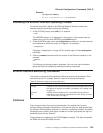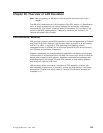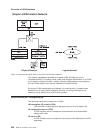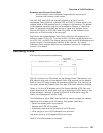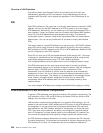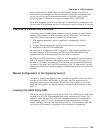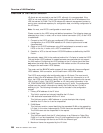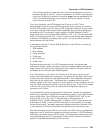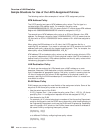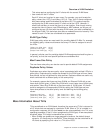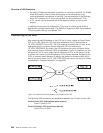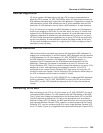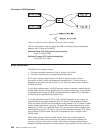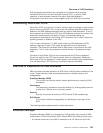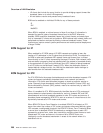This field can specify the upper bound on the size of a data frame that can be
processed by the LE client, or it can be unspecified. The LECS cannot assign a
client to an ELAN with a maximum frame size
larger
than that specified by the
client. If the ELAN allows frames too large for the client to handle, the client
cannot function on that ELAN.
Given this information, the LECS assigns the LE client to a LES. This is
accomplished through the use of policies and policy values. A policy is a criterion
that the LECS uses to make LE client-to-LES assignment decisions. A policy value
is a (value, LES) pair that indicates that the specified value should be assigned to
the specified LES. For example, a policy could be the MAC address of the LE
client, and a policy value could be (MAC ADDR_A, LES_1). An LE client with MAC
ADDR_A will be assigned to LES_1 if the LE client has not already been assigned
to another LES because of a higher-priority policy. One set of policies and policy
values applies to all the ELANs.
In accordance with the LE service MIB Specification of the ATM forum, these are
the six policies defined:
1. ATM address
2. MAC address
3. Route descriptor
4. ELAN type
5. Max frame size
6. ELAN name
Policies also have priorities. The LECS examines policies in prioritized order.
Policies with smaller values in the priority field are considered before policies with
larger values in the priority field. Policies with equal values in the priority field are
considered at the same time and
ANDed
together.
The LECS assigns an LE client to a LES when all of the policies at the current
priority level are satisfied and in agreement. The policies are satisfied when there is
a policy value that matches the corresponding field in the configuration request for
each policy at the current level. The policies are in agreement when the set of
matches include a LES that is common to all the policies. If these conditions are not
met, the LECS considers the policies at the next priority level. If the LECS is unable
to find a LES at any priority level, an unsuccessful configuration response is
returned to the LE client.
To understand the meaning of agreement of the policies, consider this example of
policies not in agreement. Suppose that the policies at priority 1 are a MAC address
and an ELAN name. One of the policy values is (X'400000121225', LES_A) and
one is (ELAN 1, LES_B). If the LE client provides a LAN destination of
X'400000121225', the MAC address policy is satisfied. If the LE client provides an
ELAN name of
ELAN 1
, then the ELAN name policy is also satisfied. In this case
the policies at priority 1 are
not
in agreement because they refer to different LESs.
In this example, the LECS would examine the policies at the next priority level.
After determining the correct LES for an LE client, the LECS returns a configuration
response to the LE client that includes the following information: LES ATM address,
ELAN type, max frame size, and ELAN name. The configuration response can also
include type/length/value (TLV) parameters. TLVs provide a method to download
optional or user-defined parameters to the LE client.
Overview of LAN Emulation
Chapter 20. Overview of LAN Emulation 261



